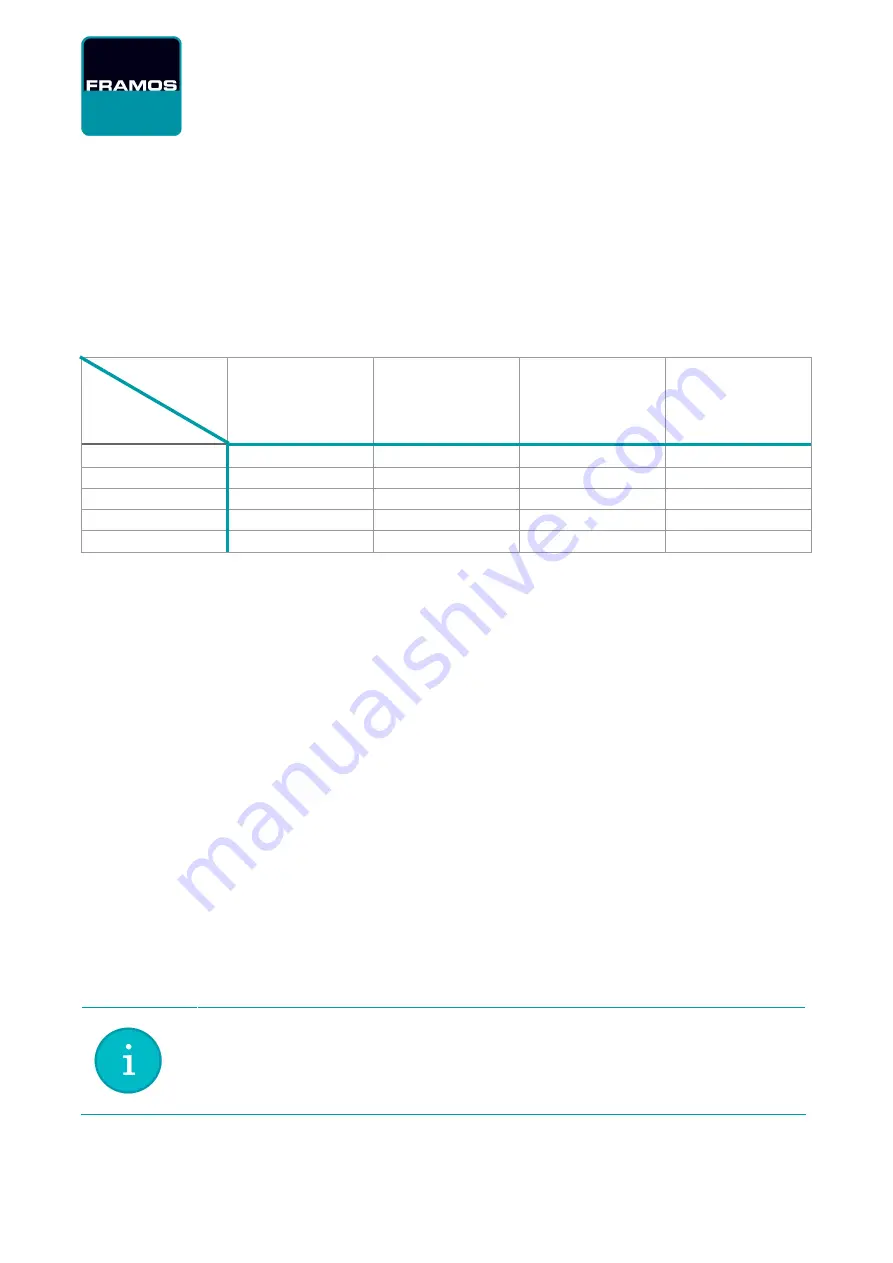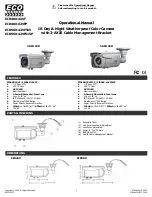
FRAMOS Industrial Depth Camera D400e Series - User Manual
Version 1.0.0 from 2020-06-30
21 of 41
4.3
Maximum Operating Ambient Temperatures
The table below is showing maximal allowed ambient temperatures that keep the camera working
within its safe operating temperature range. These results can be used when defining a cooling
solution for a specific camera use case.
The given information is based on testing the camera in its thermal steady state using a thermal test
chamber. In the chamber, there was no airflow at all. A temperature measurement error of ±1°C is
possible.
Operating mode
Cooling option
Typical1
Typical2
Max1
Max2
H0 – no heatsink
32 °C
28 °C
26 °C
25 °C
H1 – passive
37 °C
33 °C
33 °C
31 °C
H2 – passive
45 °C
44 °C
44 °C
42 °C
H3 – passive
53 °C
52 °C
52 °C
51 °C
H4 – active
54 °C
53 °C
53 °C
52 °C
Table 20 – Maximum Operating Ambient Temperatures
4.4
Summary of Operating Conditions and Temperatures
Depending on the operation mode of the camera and the applied heat dissipation elements,
ambient temperatures between 25°C and 54°C are possible. Table 2-3 shows that camera
operation in normal indoor environments (up to 31°C – 37°C) can be possible with very small
heatsinks such as H1. For moderately increased ambient temperatures, larger heat sinks must be
used. H2 is showing the tradeoff between heatsink size and maximal allowed ambient temperatures
at 42°C – 45°C. For very high ambient temperatures either large heatsink elements (H3) or active
cooling (H4) must be used.
Without any heatsink attached, the camera can sustain ambient temperature 25°C – 32°C,
depending on its utilization rate. Considering the fact, that in most cases the camera will be fixed
on a mount, the inherent heat dissipation will likely be better than shown in H0. Consequently, the
allowed ambient temperature will be higher than indicated in the H0 column. By choosing the
appropriate camera holder, sufficient thermal conductivity for most typical applications can be
achieved.
The specific customer application will differ from the examples shown above and every solution will
require a thermal analysis to ensure safe and reliable operation of the camera. Given information
should be used as a guideline at customers system design time.
Recommendation: Use metal camera mount to assure optimal heat conductivity
(avoid plastic mounts).
















































